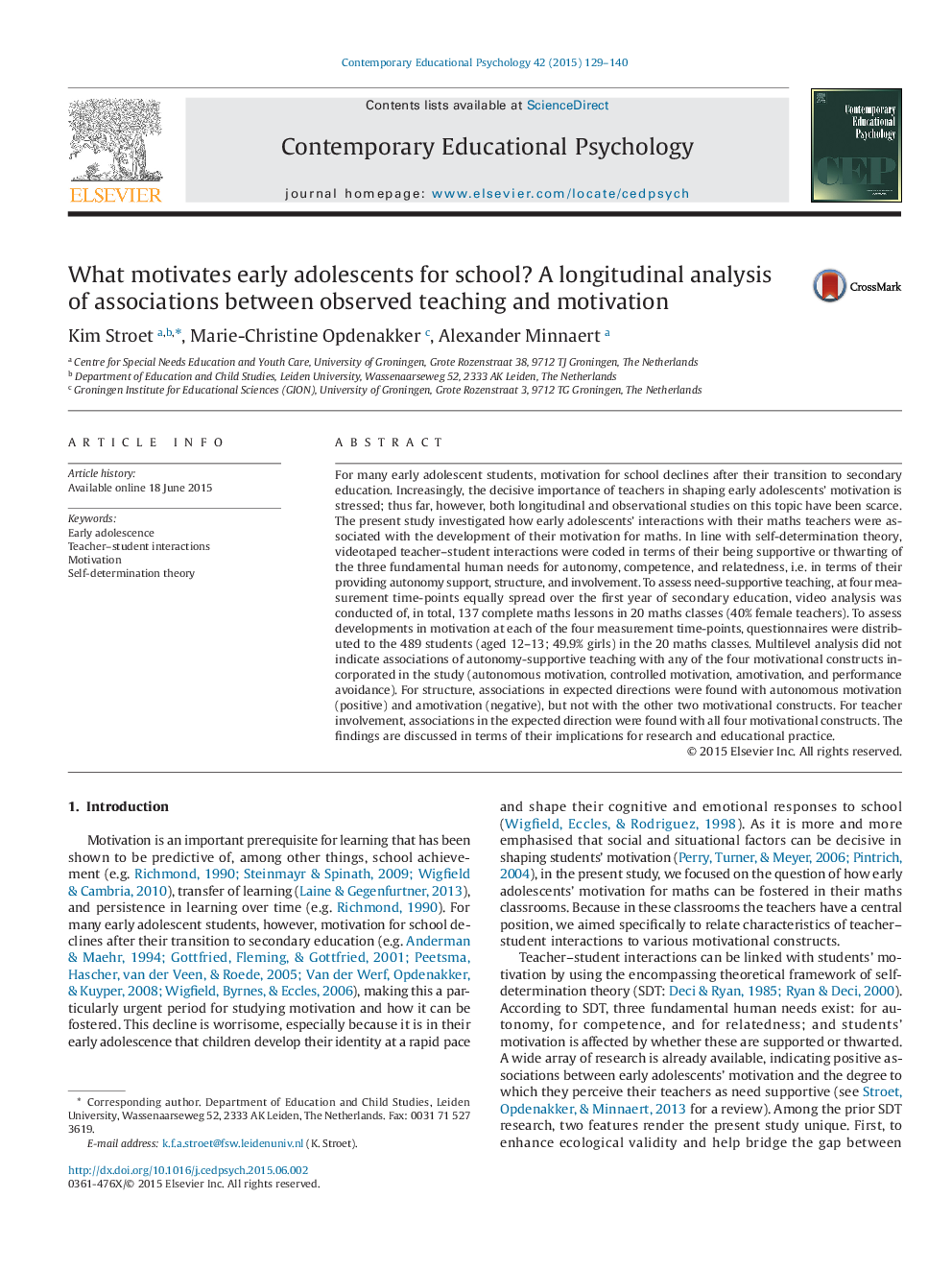| Article ID | Journal | Published Year | Pages | File Type |
|---|---|---|---|---|
| 352554 | Contemporary Educational Psychology | 2015 | 12 Pages |
•Observed teaching was associated with developments in early adolescent motivation.•Teaching in maths lessons was analysed using Self-Determination Theory.•Results did not indicate associations of autonomy support with motivation for maths.•Results showed associations of structure with two of four motivational constructs.•Results showed associations of involvement with all four motivational constructs.
For many early adolescent students, motivation for school declines after their transition to secondary education. Increasingly, the decisive importance of teachers in shaping early adolescents' motivation is stressed; thus far, however, both longitudinal and observational studies on this topic have been scarce. The present study investigated how early adolescents' interactions with their maths teachers were associated with the development of their motivation for maths. In line with self-determination theory, videotaped teacher–student interactions were coded in terms of their being supportive or thwarting of the three fundamental human needs for autonomy, competence, and relatedness, i.e. in terms of their providing autonomy support, structure, and involvement. To assess need-supportive teaching, at four measurement time-points equally spread over the first year of secondary education, video analysis was conducted of, in total, 137 complete maths lessons in 20 maths classes (40% female teachers). To assess developments in motivation at each of the four measurement time-points, questionnaires were distributed to the 489 students (aged 12–13; 49.9% girls) in the 20 maths classes. Multilevel analysis did not indicate associations of autonomy-supportive teaching with any of the four motivational constructs incorporated in the study (autonomous motivation, controlled motivation, amotivation, and performance avoidance). For structure, associations in expected directions were found with autonomous motivation (positive) and amotivation (negative), but not with the other two motivational constructs. For teacher involvement, associations in the expected direction were found with all four motivational constructs. The findings are discussed in terms of their implications for research and educational practice.
